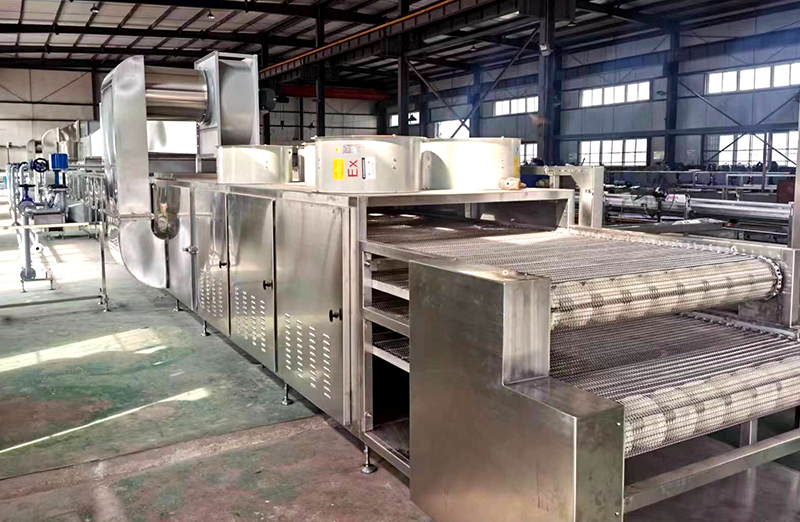Email: [email protected]
 2024.07.22
2024.07.22
 Industry News
Industry News
Adjustable Settings: Non-fried noodle machines are often equipped with advanced digital control panels that allow for precise adjustments of critical parameters. These include extrusion speed, cooking temperature, moisture levels, and pressure settings. For scaling up production, these settings must be fine-tuned to accommodate increased throughput while ensuring that the noodles maintain the desired texture, flavor, and quality.
Modular Design: Many modern non-fried noodle machines are designed with a modular architecture that facilitates scalability. This design includes interchangeable components such as extruders, cutters, and drying units. For example, additional extruders can be added to increase the production capacity or to enable the production of different noodle types. Modular systems allow for incremental upgrades, minimizing disruption to ongoing operations and providing a scalable solution that grows with production needs.
Scalable Production Capacity: Non-fried noodle machines vary in their production capacities, and selecting the appropriate model is crucial for scaling up operations. High-capacity models are designed to handle larger volumes, with enhanced features such as larger extruder barrels, higher throughput rates, and extended operational cycles. When scaling up, it’s essential to assess the machine’s ability to maintain consistency in noodle quality while increasing output.
Automated Controls: Automated control systems in non-fried noodle machines use sophisticated sensors and software to monitor and adjust production parameters in real-time. This includes regulating temperature, speed, ingredient flow, and extrusion pressure. Automated systems help maintain product uniformity and quality by continuously adjusting to variations in raw materials or production conditions. For scaling up, automation reduces the risk of human error and ensures that the machine can handle increased production volumes without compromising the consistency or quality of the noodles.
Upgraded Components: Upgrading components such as extruders, cutting tools, and drying systems can be an effective strategy for scaling up production. Many non-fried noodle machines are designed to accommodate component upgrades, allowing for improved performance and capacity without needing to replace the entire machine. Upgrades may include larger extruder screws for higher throughput, more robust cutting blades for different noodle shapes, or advanced drying units for faster processing. Manufacturers often provide retrofit kits or modular upgrades to enhance the machine’s capabilities in response to growing production demands.
Batch vs. Continuous Processing: The choice between batch and continuous processing significantly impacts the scalability of noodle production. Continuous processing systems are designed for high-volume, uninterrupted operation, making them ideal for scaling up production. These systems maintain a constant flow of noodles through various stages, such as cooking and drying, which improves efficiency and reduces downtime. In contrast, batch processing systems may require more frequent stops and starts, potentially limiting their scalability. Continuous systems offer better performance and consistency for large-scale production.
Space and Infrastructure: Scaling up production not only requires a machine that can handle higher volumes but also necessitates adequate space and infrastructure. Larger machines or additional units may require expanded floor space, specialized storage areas for raw materials and finished products, and enhanced logistical systems. Facilities must be designed to accommodate these requirements, including provisions for proper ventilation, waste management, and material handling. Adequate planning and investment in infrastructure are critical to support a scalable production environment.
NON-FRIED HAND ARRANGED NOODLE PRODUCTION LINE
